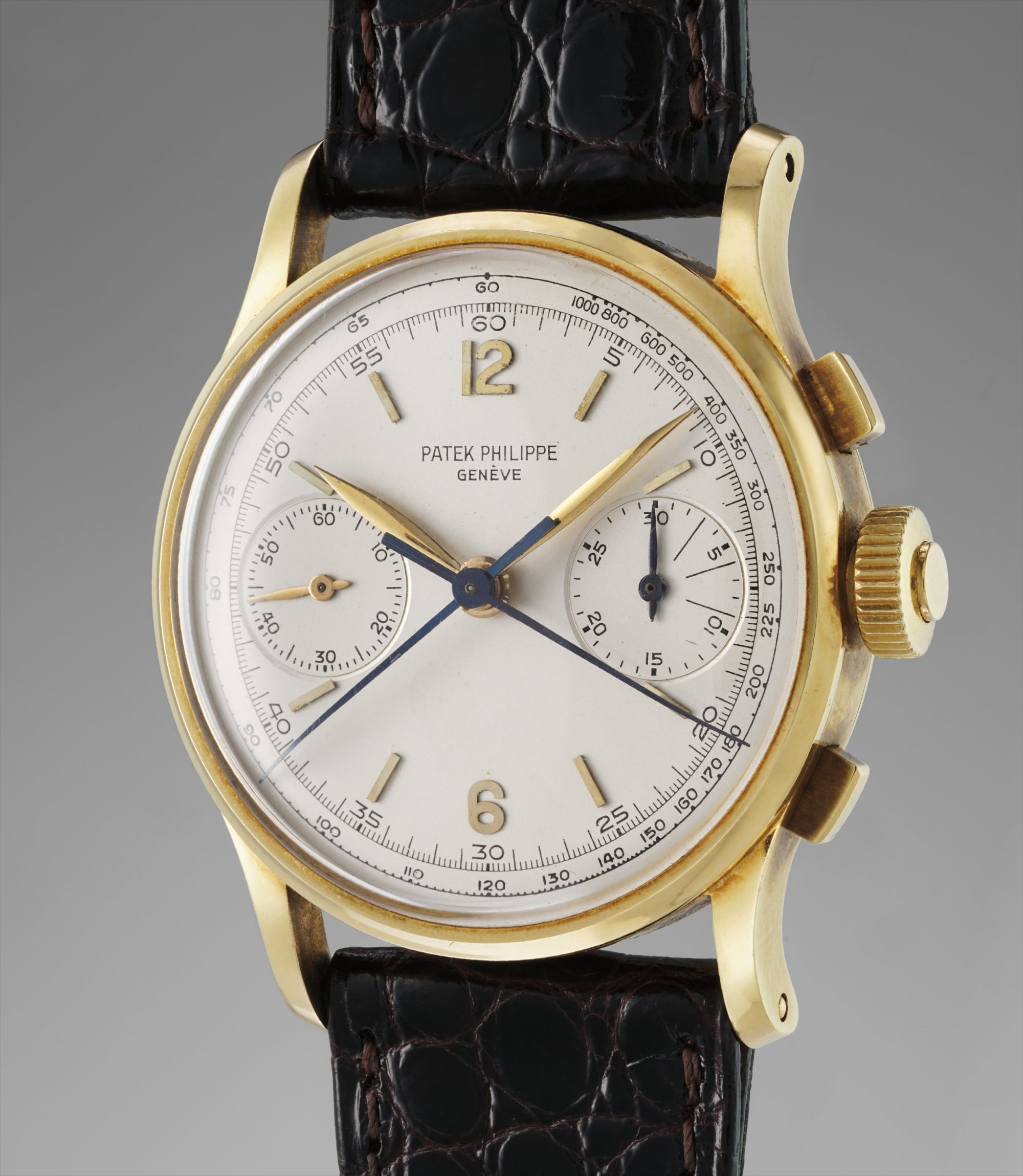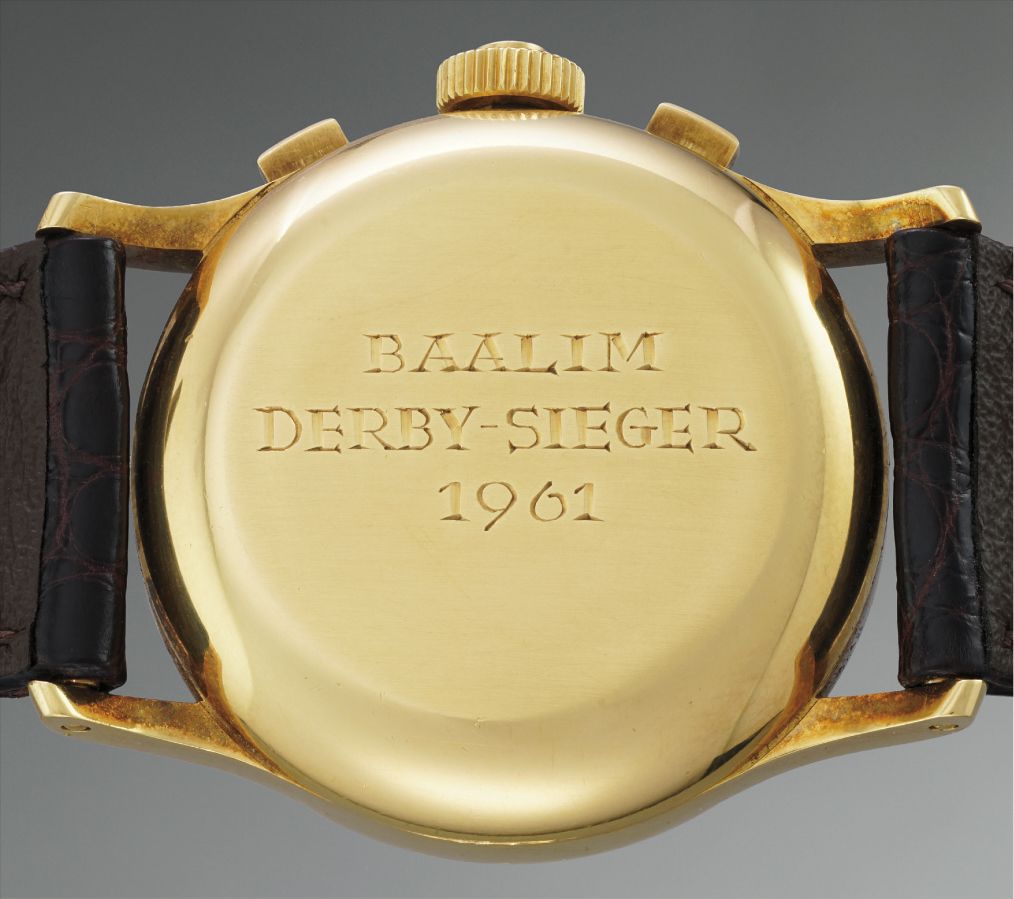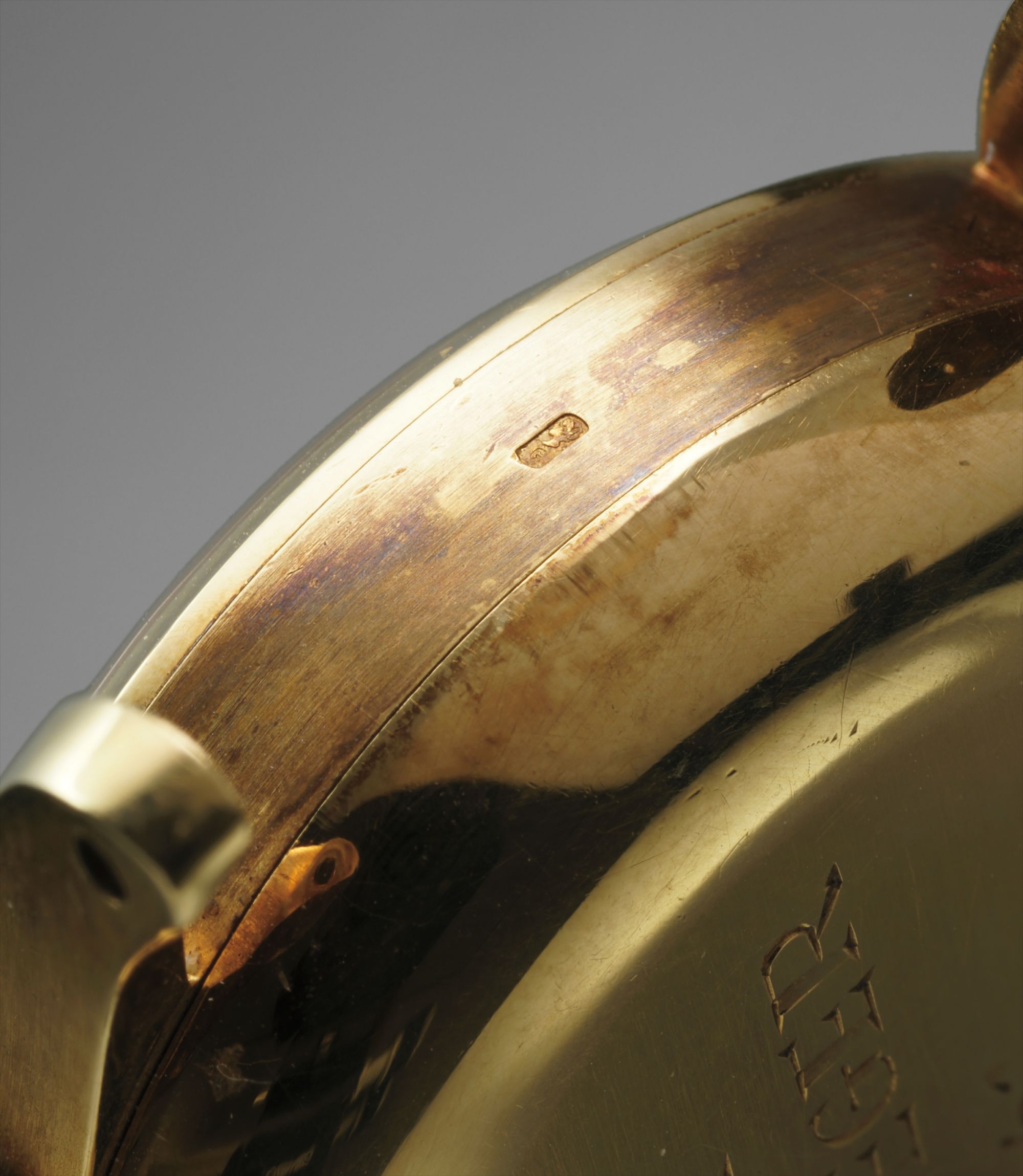









217Σ
Patek Philippe
Ref. 1436
An extremely fine and rare yellow gold split seconds chronograph wristwatch
Full-Cataloguing
Thus, in 1938, reference 1436 was born. The model is possibly one of the most elegant references ever produced by the firm, with the rattrapante chronograph mechanism housed within the confines of a 33 millimeter case. Research suggests that approximately 140 examples were produced throughout the reference's approximate 33 years of manufacture, meaning an average of 4 watches were produced each year. This is an exceedingly limited number, even by the production standards of the mid to late 20th century. The present watch is one of only approximately 25 known examples to be cased in yellow gold.
While the first generation cases were produced by Emile Vichet, later generation cases, such as the present watch were made by Ponti, Gennari & Cie. Furthermore, second generation examples featured a co-axial button within the crown to split and reunited the split chronograph hands.
This particular example is preserved in remarkable condition, with a strong hallmark between the lugs. The case has developed a beautiful layer of patina over time, and displays strong, defined lugs. The present dial also marked a change from Patek Philippe's usual design code by omitting the "base" text on the outer register. Considered an "experimental" dial, it also features "open" subsidiary registers, as opposed to earlier examples which are "closed". Interestingly, this dial configuration is almost identical to the watch's immediate sibling, reference 1436 with case number 2'616'386 and movement number 868'994. The latter is only distinguished by its shortened baton markers and "Tiffany & Co" signature on the dial.
Yet, the caseback is possibly the most fascinating element of the watch. It is inscribed "Baalim Derby-Sieger 1961", which translates to "Baalim Derby-Winner 1961". The engraving most probably refers to the Deutsches Derby race in Germany, Hamburg. In 1961, the winning horse was indeed Baalim.
As stated on the Extract from the Archives, the owner purchased the watch nine days after the horse's victory on July 2, 1961. Baalim's successful victory without a doubt enabled his owner, Countess Spreti, to receive a windfall. It is fair to believe that the watch was a generous gift from the owner, to someone involved with the race. While we may never know if the watch originally belonged to the winning jockey Gerhard Streit, or even the successful horse breeder, we are certain that the "split seconds" mechanism is inextricably tied to the sport of racing, and by extension, the victory itself.
This example is not only an incredibly well-preserved watch. It is also a relic of sorts, preserving the memory of an event which undoubtedly changed the course of its original owner's life.
Patek Philippe
Swiss | 1839Since its founding in 1839, this famous Geneva-based firm has been surprising its clientele with superbly crafted timepieces fitted with watchmaking's most prestigious complications. Traditional and conservative designs are found across Patek Philippe's watches made throughout their history — the utmost in understated elegance.
Well-known for the Graves Supercomplication — a highly complicated pocket watch that was the world’s most complicated watch for 50 years — this family-owned brand has earned a reputation of excellence around the world. Patek's complicated vintage watches hold the highest number of world records for results achieved at auction compared with any other brand. For collectors, key models include the reference 1518, the world's first serially produced perpetual calendar chronograph, and its successor, the reference 2499. Other famous models include perpetual calendars such as the ref. 1526, ref. 3448 and 3450, chronographs such as the reference 130, 530 and 1463, as well as reference 1436 and 1563 split seconds chronographs. Patek is also well-known for their classically styled, time-only "Calatrava" dress watches, and the "Nautilus," an iconic luxury sports watch first introduced in 1976 as the reference 3700 that is still in production today.